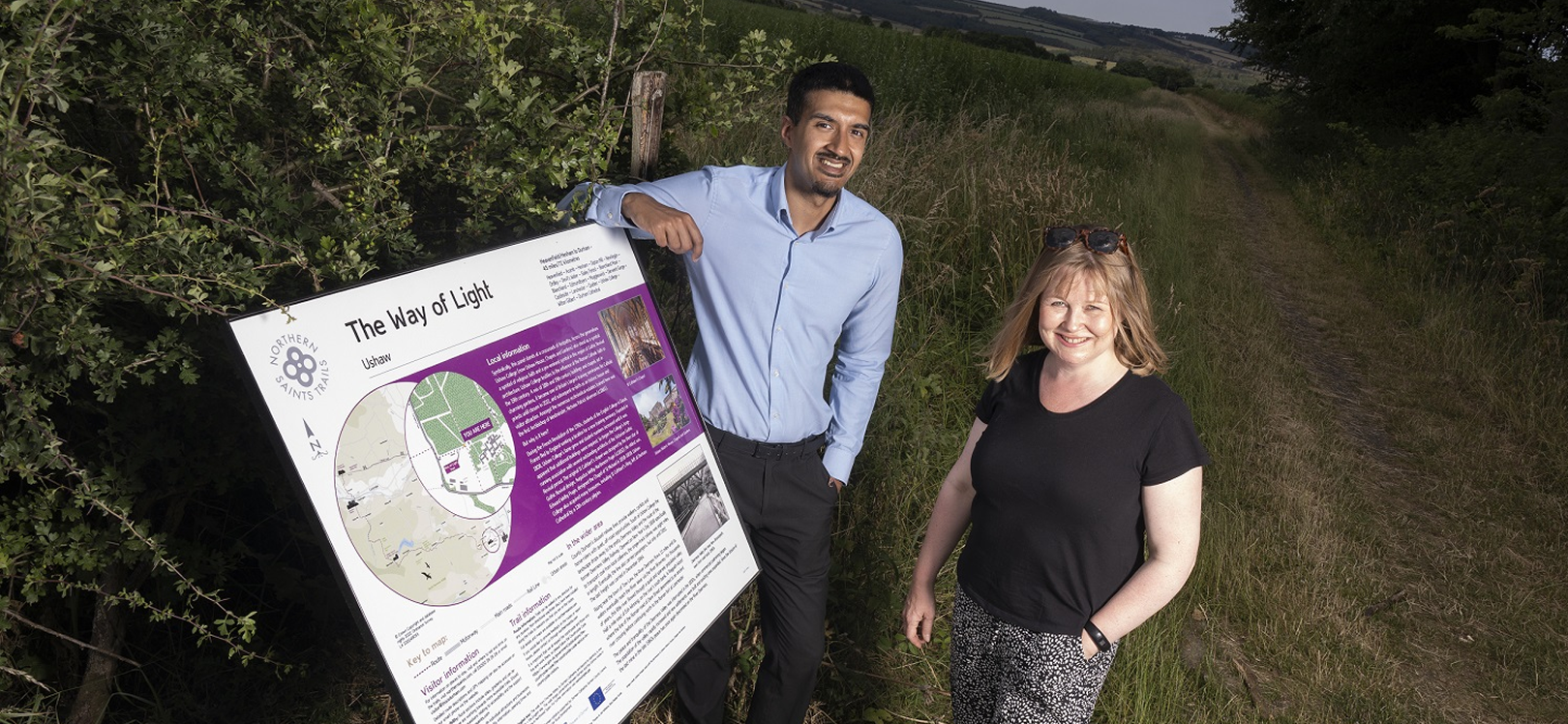Industry News
Walking trails on track to boost tourism recovery in Durham and wider region
Six long-distance walking trails inspired by the North East’s historic reputation as a place of pilgrimage are playing a significant role in boosting Durham’s tourism economy.
Launched last year, the Northern Saints Trails cover more than 200 miles and are positioning the North East as the Christian Crossroads of the British Isles. Based on ancient pilgrimage routes, the trails criss-cross the North East, taking in spectacular scenery, historic sites and more than 500 attractions, eateries and places to stay.
The trails are expected to attract 85,000 people to the region between 2022 and 2025, generating a £4.7 million annual visitor spend and supporting 64 new jobs. It is just one of the ways Visit County Durham, Durham County Council’s tourism service, and other partners are supporting tourism businesses and developing the county and wider region as a visitor destination.
This summer, 26 interpretation panels are being introduced at key points along the Durham sections of the trails to provide further insight into the heritage, landscape and stories that shaped the area. The boards also highlight nearby attractions such as Ushaw Historic House, Chapels and Gardens.
The installation of the panels comes as the latest figures for the county show clear signs of recovery within the tourism sector, amidst the ongoing challenges of the pandemic and ‘cost of living’ crisis. Despite 2021 beginning with a four-month lockdown, Durham went on to welcome 15.7 million visitors last year, an increase of 38.5 per cent on 2020. Visitor spend also increased by 63 per cent to £826.68 million, while the number of people employed within the sector rose by 48 per cent to just over 10,000.
The figures, taken from independent industry research, not only reflect the increased popularity of staycations but the high standards and innovative approach of tourism businesses in the county. The shortlisting of Durham’s countywide bid to be UK City of Culture 2025 has also had a positive impact. Despite missing out on the title, the bid has significantly raised the profile of the county’s cultural offer on a national level.
And with multi-million-pound developments underway at attractions including Raby Castle, The Auckland Project, Locomotion and Beamish, the Living Museum of the North, the county’s visitor economy is on track to reach pre-pandemic levels by 2023.
Cllr Elizabeth Scott, Durham County Council’s Cabinet member for economy and partnerships and a director of the Visit County Durham Limited board, said: “The last 2.5 years have been incredibly challenging for the tourism industry and while it’s heartening to see visitor numbers and spend increasing, it’s important we continue to support businesses and encourage more people to visit and stay for longer.
“This is a key aim behind the Northern Saints Trails, as the routes inspire people to explore more of the region and drive footfall towards attractions and hospitality businesses.
“Just like Durham’s shortlisted bid to be UK City of Culture 2025, the Northern Saints Trails showcase the landscapes and cultural offer of the entire county and wider region. It’s wonderful to see the project progressing.”
Sanjay Gidda, digital marketing assistant at Ushaw Historic House, Chapels and Gardens, said: "The Northern Saints Trails are a great asset to the region. We are so pleased to be on the route as it encourages people to stop off here at Ushaw and experience all we have to offer, from our interesting history to the wide variety of exciting events and exhibitions we have coming up."
As well as introducing the interpretation panels, further work to enhance the routes is also planned. This includes installing ten new gates, replacing and repairing stiles and improving waymarking. Five people counters were also installed last year to provide useful data about the numbers of people using each route in County Durham.
The Northern Saints Project is a Visit County Durham initiative supported by Durham Cathedral and Durham Diocese.
The interpretation panels were part funded by the European Agricultural Fund for Rural Development and researched and written by Jan Williams, an award-winning North East England Blue Badge guide.

